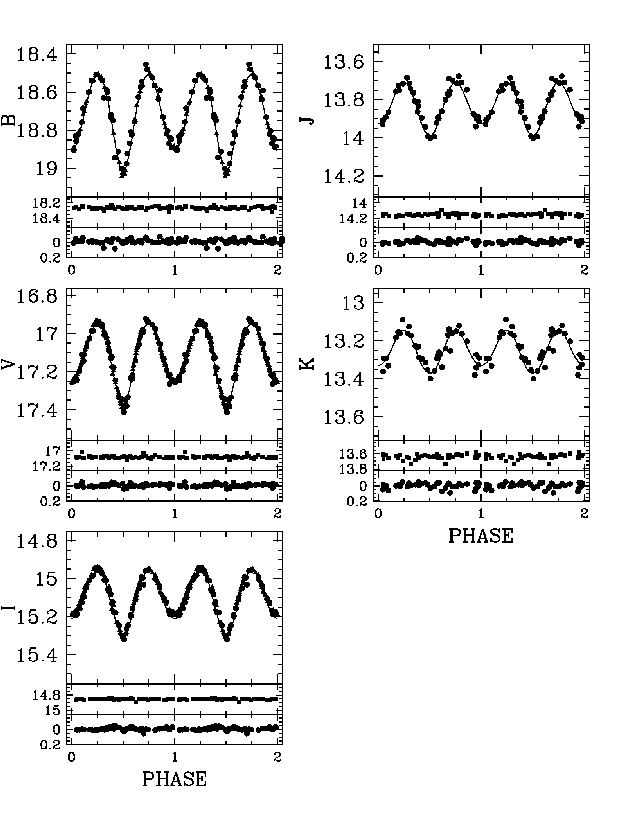Ellipsoidal Variations
The companion star is tidally distorted by the gravitational force of the
black hole, into a teardrop shape.
As it goes around in its orbit, one sees the star
side on twice per
orbit, and edge on twice per orbit. Since one sees less of the star when
it is edge on, the flux from the star changes during the orbit, with two
maxima and two minima. Below is a set of lightcurves from GRO J1655-40,
from the undergraduate senior thesis of Jenny Greene (to be published in
the Astrophysical Journal and available at
astro-ph/0101337). The data were obtained at
YALO.
The different curves are different filters;
B and V are blue and green light, and I, J, and K are different bandpasses
of infrared light. The line is a model of the ellipsoidal variations from
a code written by former graduate student Jerry Orosz. The excellent fit
of the model to the data allows us to determine that the mass of the black
hole in this system is between 5.8 and 6.8 times the mass of the Sun.

Back to
black hole page.

